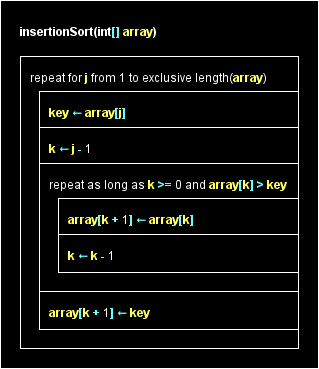Insertion Sort
How Insertion Sort Works
Insertion sort operates by iterating through the input list and inserting each current value into its correct position within the already sorted portion of the list. This process continues until the entire list is sorted.
Step-by-step breakdown:
- Start with the first element:
Consider the first element as a sorted portion. - Move to the next element:
Take the next element and compare it with the elements in the sorted portion. - Find the correct position:
Insert the current element into its correct position within the sorted portion. - Repeat:
Move to the next element and repeat the process until the entire list is sorted.

Performance and Practicality
Insertion sort is not the most efficient sorting algorithm, particularly for large datasets. Its time complexity is O(n2), meaning that the time required to sort the list grows quadratically with the number of elements. However, insertion sort can be quite efficient for small datasets or lists that are already nearly sorted.
When to Use Insertion Sort
- Educational Purposes:
Ideal for teaching basic sorting concepts and algorithmic thinking. - Small Datasets:
Suitable for small lists where its simplicity outweighs its inefficiency. - Fixed Memory Usage:
Insertion sort has the advantage of requiring a constant amount of memory, making it suitable in environments where memory usage is a concern.
Alternatives to Insertion Sort
For practical purposes and larger datasets, more efficient sorting algorithms are preferred:
- Quicksort:
A fast, comparison-based sorting algorithm that uses divide-and-conquer. - Timsort:
A hybrid sorting algorithm derived from merge sort and insertion sort, used in Python's built-in sort function. - Merge Sort:
A stable, comparison-based sorting algorithm that also uses divide-and-conquer.
Insertion Sort Code (Java)
Insertion Sort Structogram

Conclusion
While insertion sort may not be the best choice for large datasets due to its O(n2) time complexity, it remains an important algorithm in the realm of computer science education. Its simple yet effective approach to sorting provides a stepping stone to understanding more advanced algorithms like timsort. Whether you're a beginner learning about sorting or an educator explaining fundamental concepts, insertion sort serves as a valuable tool.


